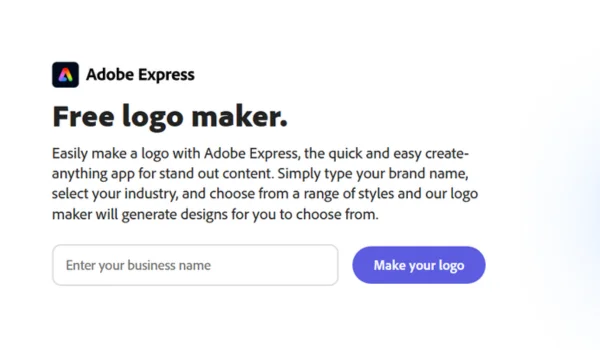A startup’s visual identity is often the first impression it makes on the world. In an increasingly digital-first marketplace, a clear and cohesive brand identity can help startups stand out, connect with their audience, and build long-term recognition. Yet, with limited resources and high competition, many new businesses struggle to craft a strong visual presence that reflects their values and vision.
Thankfully, tools like a logo maker can simplify the process. But creating a brand identity involves more than designing a logo — it’s about consistency, meaning, and strategy.
In this post, we’ll break down how startups can choose the right visual identity for their brand, from understanding brand values to practical design tips, with actionable insights for sustainable branding.
What Is a Visual Identity and Why Does It Matter?
Visual identity refers to the collection of visual elements that represent a brand. This includes the logo, color palette, typography, imagery, and design style used across websites, packaging, ads, and social media.

Unlike branding — which includes tone, mission, and values — visual identity is how these elements are communicated visually. When done right, it:
- Builds trust and recognition
- Differentiates your brand from competitors
- Enhances marketing effectiveness
- Provides a consistent customer experience
Take Airbnb, for example. Its iconic logo and clean, friendly design reflect the company’s core promise: belonging. A strong visual identity helps convey your brand story without saying a word.
A compelling visual identity builds brand recognition, communicates values, and creates a cohesive experience across all platforms.
Step 1: Define Your Brand Strategy First
Before touching any design tools, startups must define their brand strategy. This means knowing your:
- Mission and vision – What are you trying to achieve?
- Target audience – Who are you trying to reach?
- Core values – What do you stand for?
- Personality – Are you playful, serious, innovative?
These foundational pieces shape the creative direction. A luxury brand targeting professionals will look and feel different from a youth-focused gaming startup.
For example, a fintech startup focused on security and innovation might lean toward dark blues and structured typography. In contrast, a wellness brand could opt for soft, earthy tones and organic shapes.
A clear brand strategy ensures that your visual identity aligns with your purpose, audience, and values.
Step 2: Start With Your Logo
The logo is the centerpiece of your visual identity. It appears on websites, packaging, business cards, and social media — often becoming the most recognizable element of your brand.
When designing your logo, startups can:
- Hire a professional designer
- Use free logo design maker
- Work with a branding agency
A good logo should be:
- Simple – Easy to recognize and remember
- Versatile – Scalable and usable across formats
- Relevant – Matches your brand personality and industry
- Timeless – Avoids trendy designs that may date quickly
Free and affordable logo maker tools now offer smart design templates, AI-assisted suggestions, and customization options — making it easier for startups to develop professional visuals on a budget.
A well-designed logo is simple, memorable, and aligned with your brand — and using a logo maker is a cost-effective way to create one.
Step 3: Choose a Color Palette That Reflects Your Brand
Color plays a crucial psychological role in branding. Different colors evoke different emotions and perceptions:
- Blue – Trust, professionalism (e.g., tech, finance)
- Green – Health, nature, sustainability
- Red – Passion, urgency, boldness
- Yellow – Optimism, youthfulness
To create a color palette:
- Choose a primary color that reflects your brand essence.
- Add complementary colors for contrast and variety.
- Use neutral tones for balance (white, gray, black).
Consistency is key. Use the same palette across all branding materials to build visual cohesion.
Select brand colors that convey your values and stay consistent across all platforms to build recognition.
Step 4: Typography and Font Choices
Typography adds another layer of personality to your visual identity. Fonts should reflect your brand tone:
- Serif fonts (e.g., Times New Roman) feel traditional and reliable
- Sans-serif fonts (e.g., Helvetica) are modern and clean
- Script fonts (e.g., Pacifico) are creative and personal
Use no more than two or three fonts consistently:
- A headline font for big titles
- A body font for paragraphs
- An optional accent font for emphasis
Ensure readability across screens and print, and avoid fonts that feel gimmicky or overly stylized.
Choose legible, brand-appropriate fonts and apply them consistently to enhance clarity and identity.
Step 5: Develop Brand Guidelines
Once your visual elements are defined, document them in a brand style guide. This helps ensure consistency, especially when working with designers, marketers, or developers.
A brand style guide typically includes:
- Logo usage rules (size, spacing, background)
- Color codes (HEX, RGB, CMYK)
- Font names and styles
- Image styles and tone
- Do’s and don’ts
Clear guidelines prevent dilution and keep your brand identity sharp as your team grows.
A detailed brand guide ensures your visual identity stays consistent, clear, and on-brand across all touchpoints.
Step 6: Audit and Evolve Over Time
Your brand identity isn’t static. As your business grows, you might need to evolve or refresh your visuals to better reflect your mission or expand your audience.
Regularly audit your visuals:
- Are they still relevant?
- Are they consistent across channels?
- Do they support current goals?
Use analytics and customer feedback to inform updates. But always keep core elements like your logo and color palette intact unless rebranding.
Continually evaluate your visual identity to ensure it evolves with your brand while maintaining recognition.
Frequently Asked Questions (FAQs)
What is a visual identity in branding?
Visual identity refers to the visual elements of a brand, including the logo, color palette, fonts, and imagery.
A brand’s visual identity is its visual expression, shaping how it’s seen and remembered.
Why is a logo important for startups?
A logo serves as the visual symbol of your brand. It builds trust, conveys professionalism, and supports brand recognition.
A strong logo is central to branding, making your startup recognizable and credible.
Can I use a logo maker instead of hiring a designer?
Yes. Modern logo makers provide quality templates and customization tools, ideal for startups on a budget.
Logo makers are practical tools for startups needing fast, affordable brand visuals.
What are brand guidelines?
Brand guidelines document the visual rules of your brand — including logo usage, colors, and typography — to ensure consistency.
Echo Block: Brand guidelines maintain visual consistency as your startup scales.
How often should I update my visual identity?
Audit your brand visuals annually or when your business shifts direction. Refresh only if needed.
Review your identity regularly, but change only when it aligns with strategic shifts.
Conclusion: Building a Visual Identity That Grows With You
Choosing the right visual identity is both creative and strategic. Startups must align their brand visuals with their mission, values, and audience — not just chase trends. From logo creation with smart tools like a logo maker to developing consistent guidelines, each step contributes to how your brand is perceived.
A thoughtful, consistent visual identity isn’t just good design — it’s good business.
A strong visual identity empowers startups to connect authentically, stand out clearly, and grow confidently from day one.
Discover how startups can craft a compelling visual identity — from strategy to execution — using tools like a logo maker to stand out and stay consistent.




